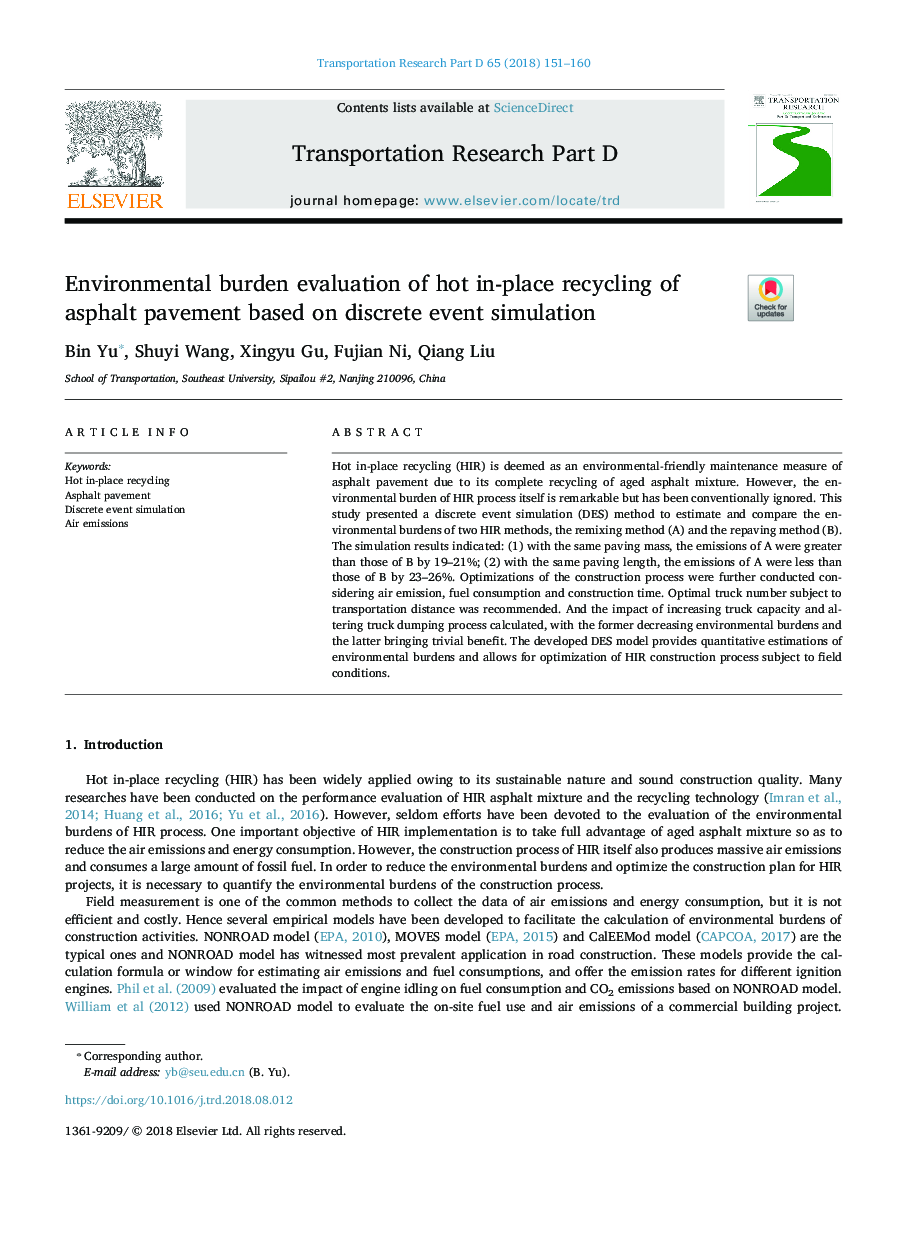| Article ID | Journal | Published Year | Pages | File Type |
|---|---|---|---|---|
| 9953260 | Transportation Research Part D: Transport and Environment | 2018 | 10 Pages |
Abstract
Hot in-place recycling (HIR) is deemed as an environmental-friendly maintenance measure of asphalt pavement due to its complete recycling of aged asphalt mixture. However, the environmental burden of HIR process itself is remarkable but has been conventionally ignored. This study presented a discrete event simulation (DES) method to estimate and compare the environmental burdens of two HIR methods, the remixing method (A) and the repaving method (B). The simulation results indicated: (1) with the same paving mass, the emissions of A were greater than those of B by 19-21%; (2) with the same paving length, the emissions of A were less than those of B by 23-26%. Optimizations of the construction process were further conducted considering air emission, fuel consumption and construction time. Optimal truck number subject to transportation distance was recommended. And the impact of increasing truck capacity and altering truck dumping process calculated, with the former decreasing environmental burdens and the latter bringing trivial benefit. The developed DES model provides quantitative estimations of environmental burdens and allows for optimization of HIR construction process subject to field conditions.
Related Topics
Life Sciences
Environmental Science
Environmental Science (General)
Authors
Bin Yu, Shuyi Wang, Xingyu Gu, Fujian Ni, Qiang Liu,
